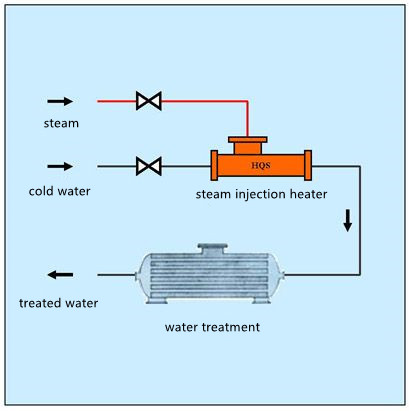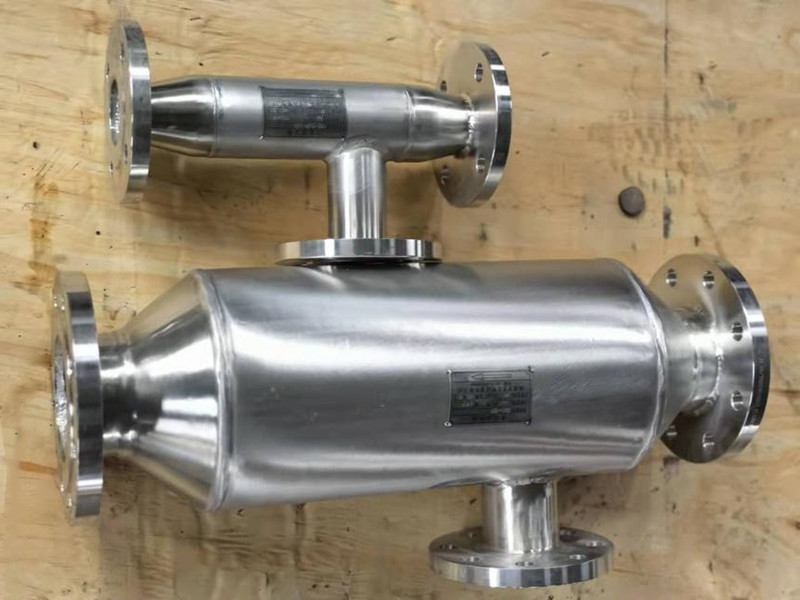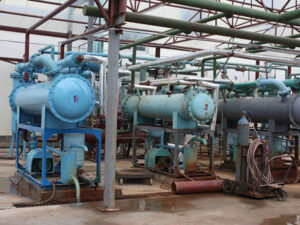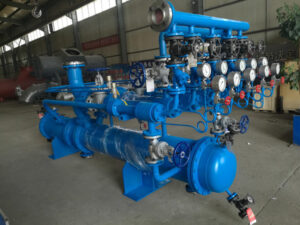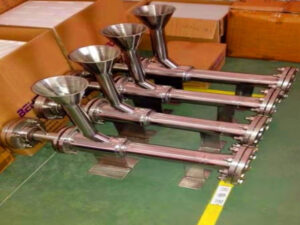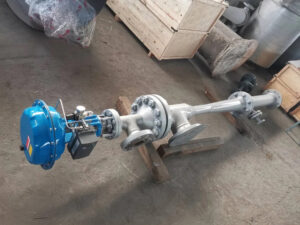Direct steam injection heater
Product Details
Inline steam injection heater is used for heating of liquids by steam along with mixing function. Direct steam injection is much more efficient method than indirect heat exchange. Due to its advanced structure, its noise and vibration is minimized. As steam is blended into process fluid, both sensible and latent heat of steam is fully used to get 100% thermal efficiency, and there is no waste of steam condensate. Even the system installs various valves and instruments, steam injection heater could run stably without water hammer.
Steam injection heater is an ideal steam heater used for heating of deaerator water, hot caustic solution in resin bed regeneration, swimming pool water, domestic water, district heating circulating water. Also, it is used for heating and mixing for various fluids in food, brewery, pharmacy, chemical, oil, rubber, paper, textile, refinery, power generation industry.
Working principle:
Structure of steam injection heater is shown as below. De Laval nozzle is the core part. Water flow coming from throat is mixed with steam injected through inclined holes on nozzle. Water temperature is raised by the heat of steam.
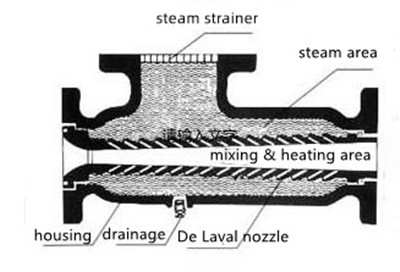
Application example 1: once-through heating system
Once-through heating system is mainly used to provide hot water for daily life or production (bathroom, washroom, restaurant, swimming pool, hotel). Direct steam injection into water would raise temperature to certain level. To keep water temperature stable, automatic valves and instruments are installed. End users could get access to hot water rapidly and conveniently.
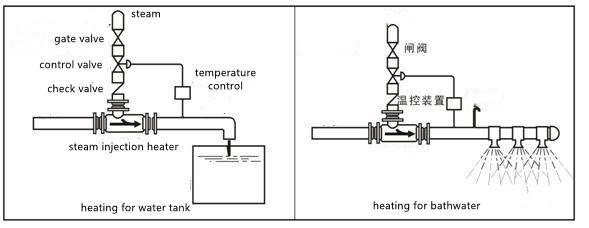
Application example 2: circular heating system
Circular heating system is mainly used for industrial production process, where fluid temperature must be stable or temperature raise must match with process requirement. Fluids circulate inside short pipelines. Steam injection heater raise fluid to desired temperature. Heated fluids exchange heat inside the tank. Then fluids get out of tank and get heated again. Automatic temperature control device is equipped for this system.

Application example 3: for heating system & air conditioning system
As shown in picture below, hot water circulates inside pipeline. Temperature is maintained at set value. As this is a circulation system, there is no need for heat storage tank, but overflow tank is required. Q1 stands for hot water, Q2 stands for hot water, Q3 stands for return water, Q4 stands for feed water.
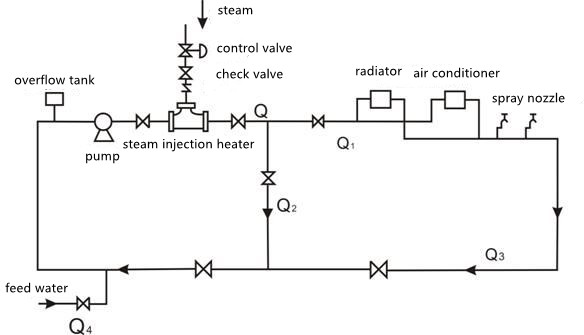
Application example 4:
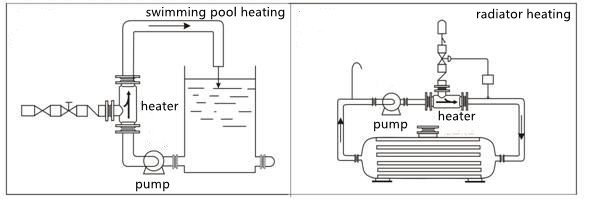
Now most power plants use ultrafiltration, reverse osmosis and iron exchange for the treatment of boiler makeup water. In winter season, water temperature could be only 0-5℃. Low temperature makes RO membrane pore smaller, resulting in less treated water and higher system pressure. Higher pressure would compact RO membrane and shorten its service life. Steam injection heater for reverse osmosis water could ensure stable feeding water temperature.
In winter season, steam injection heater could heat RO water from 5℃ to 25℃. Direct steam injection heater could mix steam and water sufficiently in a short time. Compared with traditional plate heat exchanger, it has advantages like small size (only 1/2-1/5), high efficiency up to 99%, high water flow (up to 700tph per unit), low vibration, easy installation, no scale buildup, etc. And steam injection heater could accurately control water outlet temperature. It could adjust steam valve opening to change steam volume to maintenance temperature at 25℃. These features make steam injection heater and ideal choice for reverse osmosis water heating.
